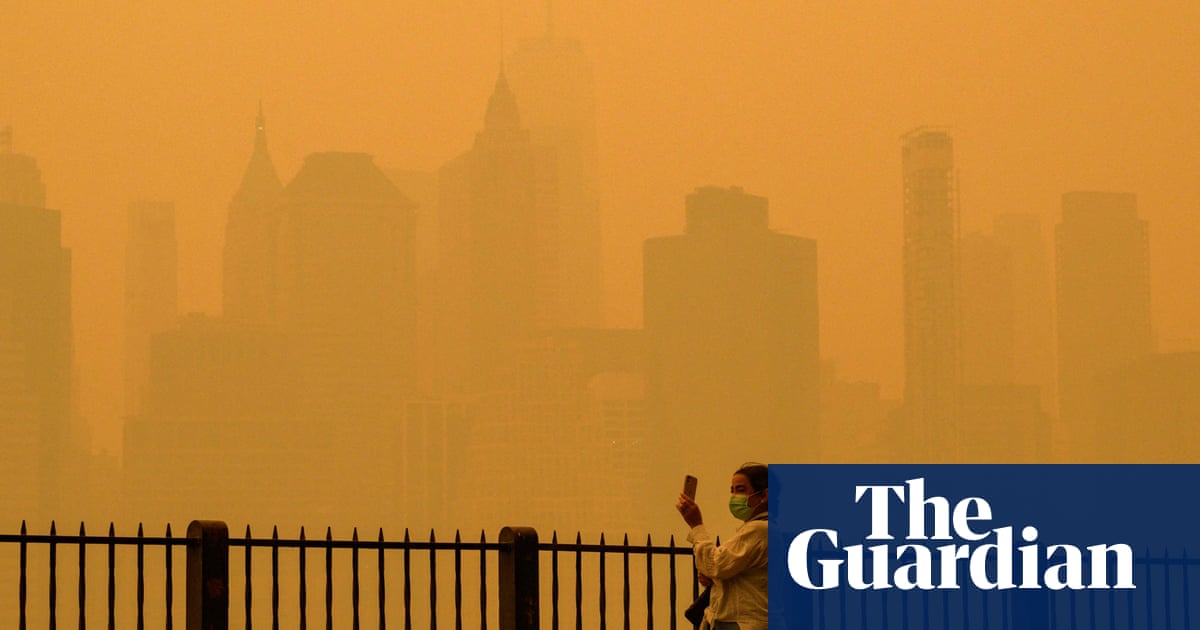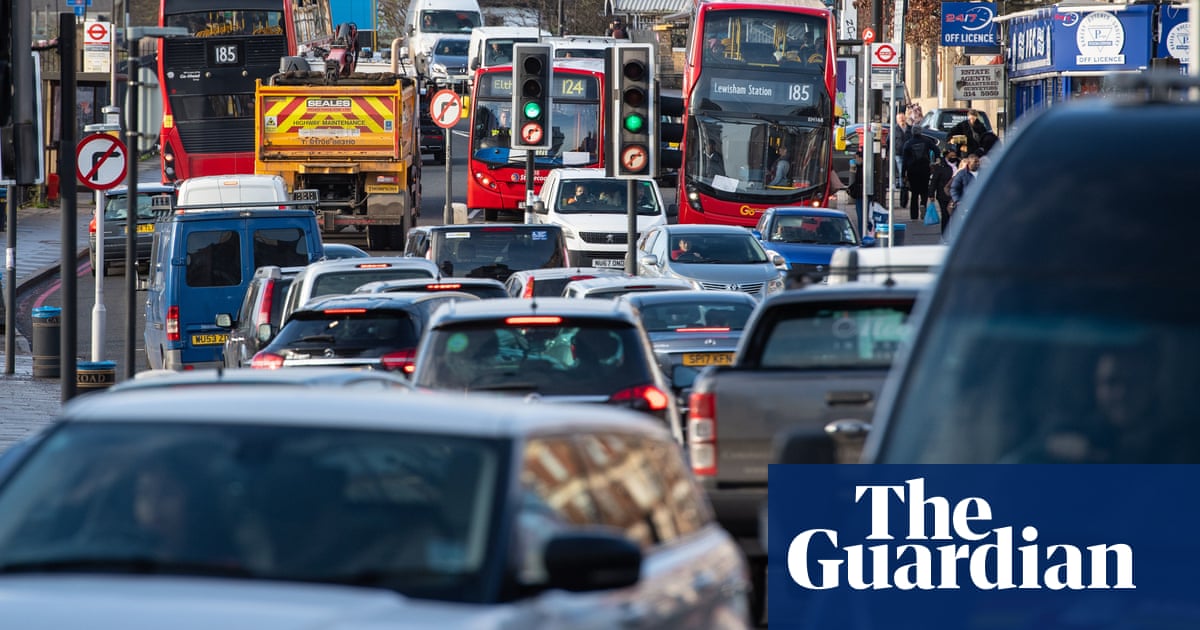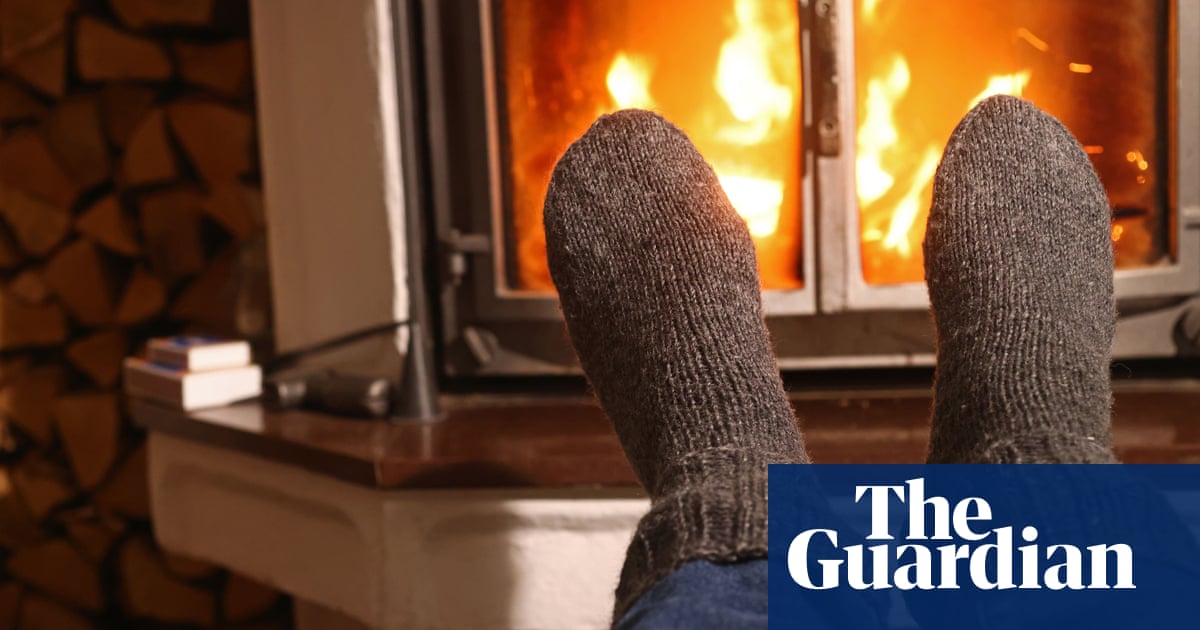
The US experienced its worst toxic air pollution from wildfire smoke in its recent recorded history on Wednesday, researchers have found, with people in New York exposed to levels of pollution more than five times above the national air quality standard.
The rapid analysis of the extreme event, shared with the Guardian, found that smoke billowing south from forest fires in Canada caused Americans to suffer the worst day of average exposure to such pollution since a dataset on smoky conditions started in 2006.
“It’s the worst by far, I mean, Jesus, it was bad,” said Marshall Burke, an environmental scientist at Stanford University who led the work. “It’s hard to believe to be honest, we had to quadruple check it to see if it was right. We have not seen events like this, or even close to this, on the east coast before. This is a historic event.”
The Stanford researchers calculated that the average American on Wednesday was exposed to 27.5 micrograms per cubic meter of small particulate matter carried within the plumes of smoke. These tiny flecks of soot, dust and other burned debris, known as PM2.5, bury deep in the lungs when inhaled and are linked to a variety of health conditions and can cause deaths.
This high average level of pollution is well beyond the next largest such event, experienced in September 2020 on the US west coast following a record year of fires in the western states, and was far more severe for those directly in the path of the smoke, across much of the north-east US.
In New York, where the sky went from a milky white to a Blade Runner orange over the course of a day when schools and playgrounds shut down outdoor activities and people started donning masks outside not worn since the early days of the pandemic, the particulate matter hit around 195 micrograms, more than five times above the national air quality standard.
“The levels yesterday were quite dangerous, particularly if you are in a vulnerable group,” said Burke, adding that this includes vast swaths of people such as the elderly, children, pregnant women and those with prior medical conditions. “I expect we will see an uptick in respiratory hospitalizations, pre-term births and, sadly, mortalities.”
Many New Yorkers stayed indoors rather than brave the campfire smell lingering on streets shrouded in smoke but even this did not fully shield most people, Burke said, with indoor air monitors in Manhattan showing that people experienced more than 100 micrograms of particulate matter.
“People had terrible indoor air too, just really bad,” he said. “Even staying at home is not fully protective. Good luck to anyone trying to get an air filter anywhere in New York yesterday. The eastern seaboard luckily hasn’t had to deal with air quality events like this before, so many people just weren’t prepared.”
The Stanford research looks at wildfire smoke levels and gauges the average exposure for all Americans, and has done so since 2006. Burke said, however, that growth in both population and the severity of wildfires, driven by the climate crisis, means that it is unlikely that more people have ever previously been exposed to toxic wildfire smoke than on Wednesday.
While previous blazes in California have caused similarly high levels of air pollution, the east coast’s cluster of large cities means that more people have been exposed to harmful air than in previous events.
New York City health officials have rolled out a list of safety measures to take as the city remains shrouded in a thick, smoky haze, which could last for several more days as smoke continues to pour from unusually widespread fires in Quebec.
In addition to urging residents to wear high-quality masks such as N95s or KN95s, health officials are urging residents to keep windows closed, use an air purifier if possible, and if an air conditioner is on, to close the fresh air intake to prevent outdoor air from entering inside homes.
Francesca Dominici, an expert in air pollution and climate at Harvard University, said that people should also refrain from exercising outdoors to avoid the “crazy levels” of air pollution, but that she still expected a surge of hospitalizations from cardiovascular and respiratory problems triggered by the smoke.
“You can do some things to protect yourself but this just shows that climate change isn’t just affecting glaciers and polar bears, it’s affecting us to the point we can’t breathe clean air any more,” she said.
“I hope as part of this crisis there is an opportunity to realize we need to act on climate change. We’ve gone from three years of not going out because of Covid and now we can’t go outside because of polluted air. The world and nature is telling us something, it’s sending us a very strong message.”












